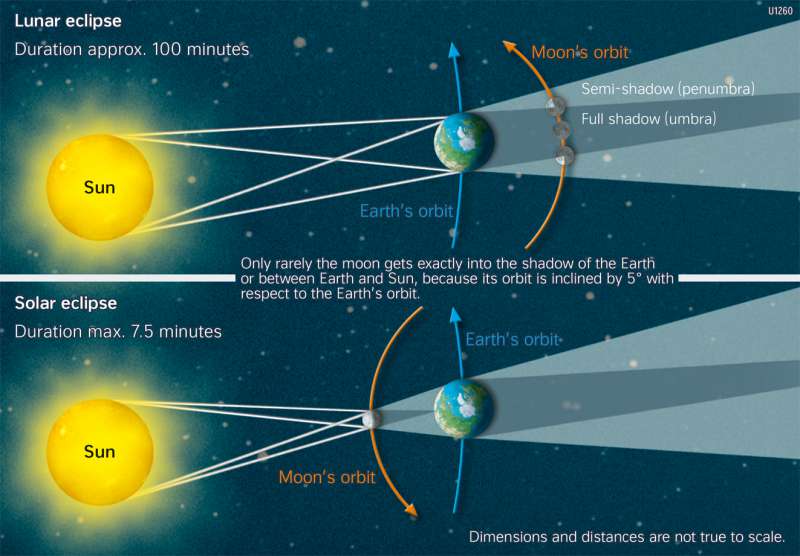Universe - Lunar and solar eclipses
978-3-14-100890-6 | Page 10 | Ill. 7

Overview
Lunar and solar eclipses are interactions of sunlight and the shadow of the Earth or Moon. The edge rays of the Sun as the light source on the respective shadow-casting object determine the size of the shadow.
Three celestial bodies in line
Lunar and solar eclipses are interactions of sunlight and the shadow of the Earth or Moon. The edge rays of the Sun as the light source on the respective shadow-casting object determine the size of the shadow.
Requirements for solar and lunar eclipsese
A lunar eclipse is generally visible to all inhabitants of the Earth who are on the night side of the Earth, whereas a solar eclipse can only be observed on a narrow strip of the Earth and, moreover, only for a short time in its total phase.
In general, a solar eclipse should be observable every new moon and a lunar eclipse every full moon, i.e. every month. However, this is not the case because the Moon’s orbital plane is tilted at an angle of 5 degrees to the Earth's orbital plane. Therefore, the Sun, Earth and Moon are only exactly in line when the Moon is close to the points where the orbit of the Moon crosses the Earth's orbit (nodes of the orbit of the Moon). Most of the time, however, the Moon is outside the Earth’s orbital plane. Fully illuminated by the Sun in space, as a full Moon, it passes under or over the Earth's shadow, or the shadow of the New Moon misses the Earth under or over its orbit.




